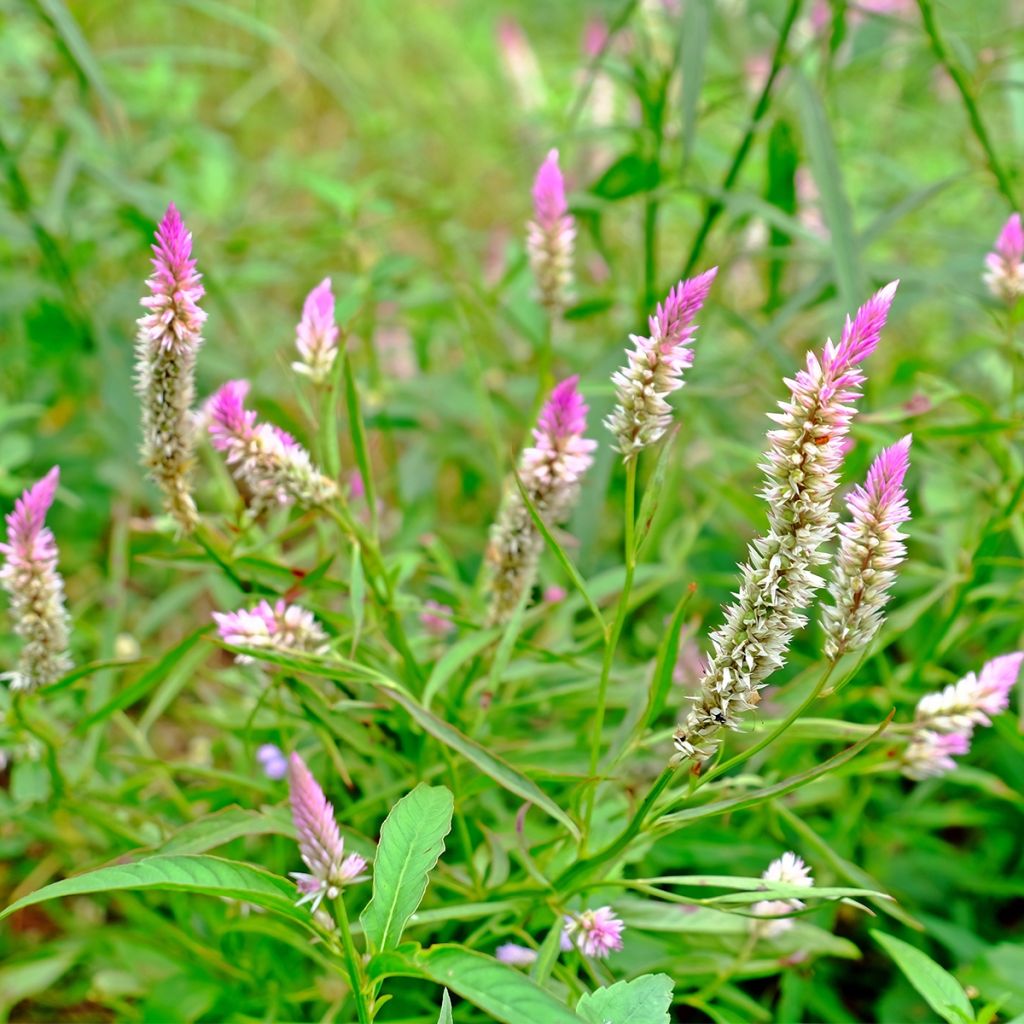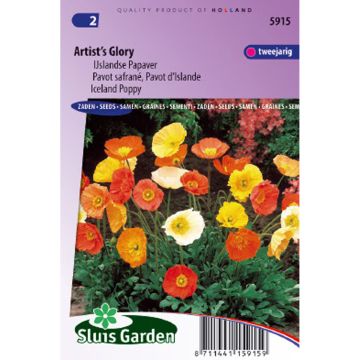Shipping country and language
Your country of residence may be:
Your country of residence is:
For a better user experience on our website, you can select:
Your shipping country:
Andorra
Austria
Belgium
Bulgaria
Canada
Chile
Croatia
Cyprus
Czechia
Denmark
Estonia
Finland
France
Germany
Greece
Hungary
Iceland
Ireland
Italy
Latvia
Lithuania
Luxembourg
Malta
Monaco
Netherlands
Poland
Portugal
Romania
Slovakia
Slovenia
Spain
Sweden
Switzerland
United Kingdom
We only deliver seed and bulb products to your country. If you add other products to your basket, they cannot be shipped.
Language:
French
German
Spanish
English
My Account
Hello
My wish lists
Plantfit
Log in / Register
Existing customer?
New customer?
Create an account to track your orders, access our customer service and, if you wish, make the most of our upcoming offers.


Celosie Flamingo Pink NT - Ferme de Sainte Marthe


Celosie Flamingo Pink NT - Ferme de Sainte Marthe
Celosia Flamingo Pink - Silver cock's comb
Celosia argentea var. spicata Flamingo Pink
Silver Cock's Comb, Flamingo Feather, Wheat Celosia
Order in the next for dispatch today!
Dispatch by letter from 3,90 €.
Delivery charge from 5,90 € Oversize package delivery charge from 6,90 €.
More information
This item is not available in your country.
Shipping country:
Andorra
Austria
Belgium
Bulgaria
Canada
Chile
Croatia
Cyprus
Czechia
Denmark
Estonia
Finland
France
Germany
Greece
Hungary
Iceland
Ireland
Italy
Latvia
Lithuania
Luxembourg
Malta
Monaco
Netherlands
Poland
Portugal
Romania
Slovakia
Slovenia
Spain
Sweden
Switzerland
United Kingdom
Schedule delivery date,
and select date in basket
This plant carries a 6 months recovery warranty
More information
We guarantee the quality of our plants for a full growing cycle, and will replace at our expense any plant that fails to recover under normal climatic and planting conditions.
Seed-only orders are dispatched by sealed envelope. The delivery charge for seed-only orders is 3,90 €.
Would this plant suit my garden?
Set up your Plantfit profile →
Description
The Flamingo Pink Celosia is a lovely selection of pink flowers derived from the Celosia argentea var. Spicata, an annual plant naturalized in tropical regions around the globe. It forms a bushy clump adorned with very soft-to-the-touch floral spikes, gradually fading to a beautiful silvery tone from the base to the top of the spike. Highly ornamental, it is also a vegetable plant whose young leaves can be consumed like spinach and its seeds like a cereal. It is an easy-to-grow plant in rich, sunny soil. Sow indoors in March, transplant outdoors after the last frost.
The Flamingo Pink Celosia belongs to the Amaranthaceae family, just like amaranths and orach, for example. This variety stands out with its inflorescences in narrow, upright pyramidal cymes composed of tiny pink flowers, giving the overall appearance of a feather duster. Its pale green foliage consists of lanceolate leaves measuring 10-15 cm (4-6in) long. Together, they form a clump of branched and leafy stems that reaches about 60 cm (24in) in height and 50 cm (20in) in width. Flowering begins in June (depending on the sowing date) and continues throughout the summer. After pollination, a large quantity of small, light brown rounded seeds form. The leaves and mature stems have a bitter taste, while the young leaves have a pleasant, slightly spicy flavour reminiscent of spinach.
The Flamingo Pink Celosia can be used as a fresh or dried cut flower. Its vibrant colours are perfect for brightening up a dull bouquet. Planting should take place after the last frost (in May in most regions) as it freezes at 0°C (32°F). The soil should be enriched with compost or potting soil before planting. Celosia prefers full sun exposure. This annual is perfect for flower beds and flower borders. It also allows for the creation of stunning exotic flower pots on the terrace.
Celosia Flamingo Pink - Silver cock's comb in pictures


Flowering
Foliage
Plant habit
Botanical data
Celosia
argentea var. spicata
Flamingo Pink
Amarantaceae
Silver Cock's Comb, Flamingo Feather, Wheat Celosia
Cultivar or hybrid
Other Celosias
Planting and care
Sow the February to April Célosie in a tray. Use good quality soil. Sow your seeds broadcast. Cover the seeds by sprinkling soil on top or using vermiculite, lightly press down and water generously with a fine rain. Place your tray in light, without direct sunlight, at a temperature of 24°C to 27°C.
The seeds will germinate in 14 to 21 days. As soon as the plants reach a height of 5 cm (2in), transplant them into buckets. 15 days before their final planting, start gradually acclimating them to a temperature of 15°C.
By the end of May or early June, the temperature will be warm enough in the garden to plant your young plants. Choose a sunny location. Add a good scoop of compost soil to each planting hole. Space your plants 25 cm (10in) apart.
Sowing period
Intended location
This item has not been reviewed yet - be the first to leave a review about it.
Flower seeds
Haven't found what you were looking for?
Hardiness is the lowest winter temperature a plant can endure without suffering serious damage or even dying. However, hardiness is affected by location (a sheltered area, such as a patio), protection (winter cover) and soil type (hardiness is improved by well-drained soil).

Photo Sharing Terms & Conditions
In order to encourage gardeners to interact and share their experiences, Promesse de fleurs offers various media enabling content to be uploaded onto its Site - in particular via the ‘Photo sharing’ module.
The User agrees to refrain from:
- Posting any content that is illegal, prejudicial, insulting, racist, inciteful to hatred, revisionist, contrary to public decency, that infringes on privacy or on the privacy rights of third parties, in particular the publicity rights of persons and goods, intellectual property rights, or the right to privacy.
- Submitting content on behalf of a third party;
- Impersonate the identity of a third party and/or publish any personal information about a third party;
In general, the User undertakes to refrain from any unethical behaviour.
All Content (in particular text, comments, files, images, photos, videos, creative works, etc.), which may be subject to property or intellectual property rights, image or other private rights, shall remain the property of the User, subject to the limited rights granted by the terms of the licence granted by Promesse de fleurs as stated below. Users are at liberty to publish or not to publish such Content on the Site, notably via the ‘Photo Sharing’ facility, and accept that this Content shall be made public and freely accessible, notably on the Internet.
Users further acknowledge, undertake to have ,and guarantee that they hold all necessary rights and permissions to publish such material on the Site, in particular with regard to the legislation in force pertaining to any privacy, property, intellectual property, image, or contractual rights, or rights of any other nature. By publishing such Content on the Site, Users acknowledge accepting full liability as publishers of the Content within the meaning of the law, and grant Promesse de fleurs, free of charge, an inclusive, worldwide licence for the said Content for the entire duration of its publication, including all reproduction, representation, up/downloading, displaying, performing, transmission, and storage rights.
Users also grant permission for their name to be linked to the Content and accept that this link may not always be made available.
By engaging in posting material, Users consent to their Content becoming automatically accessible on the Internet, in particular on other sites and/or blogs and/or web pages of the Promesse de fleurs site, including in particular social pages and the Promesse de fleurs catalogue.
Users may secure the removal of entrusted content free of charge by issuing a simple request via our contact form.
The flowering period indicated on our website applies to countries and regions located in USDA zone 8 (France, the United Kingdom, Ireland, the Netherlands, etc.)
It will vary according to where you live:
- In zones 9 to 10 (Italy, Spain, Greece, etc.), flowering will occur about 2 to 4 weeks earlier.
- In zones 6 to 7 (Germany, Poland, Slovenia, and lower mountainous regions), flowering will be delayed by 2 to 3 weeks.
- In zone 5 (Central Europe, Scandinavia), blooming will be delayed by 3 to 5 weeks.
In temperate climates, pruning of spring-flowering shrubs (forsythia, spireas, etc.) should be done just after flowering.
Pruning of summer-flowering shrubs (Indian Lilac, Perovskia, etc.) can be done in winter or spring.
In cold regions as well as with frost-sensitive plants, avoid pruning too early when severe frosts may still occur.
The planting period indicated on our website applies to countries and regions located in USDA zone 8 (France, United Kingdom, Ireland, Netherlands).
It will vary according to where you live:
- In Mediterranean zones (Marseille, Madrid, Milan, etc.), autumn and winter are the best planting periods.
- In continental zones (Strasbourg, Munich, Vienna, etc.), delay planting by 2 to 3 weeks in spring and bring it forward by 2 to 4 weeks in autumn.
- In mountainous regions (the Alps, Pyrenees, Carpathians, etc.), it is best to plant in late spring (May-June) or late summer (August-September).
The harvesting period indicated on our website applies to countries and regions in USDA zone 8 (France, England, Ireland, the Netherlands).
In colder areas (Scandinavia, Poland, Austria...) fruit and vegetable harvests are likely to be delayed by 3-4 weeks.
In warmer areas (Italy, Spain, Greece, etc.), harvesting will probably take place earlier, depending on weather conditions.
The sowing periods indicated on our website apply to countries and regions within USDA Zone 8 (France, UK, Ireland, Netherlands).
In colder areas (Scandinavia, Poland, Austria...), delay any outdoor sowing by 3-4 weeks, or sow under glass.
In warmer climes (Italy, Spain, Greece, etc.), bring outdoor sowing forward by a few weeks.











